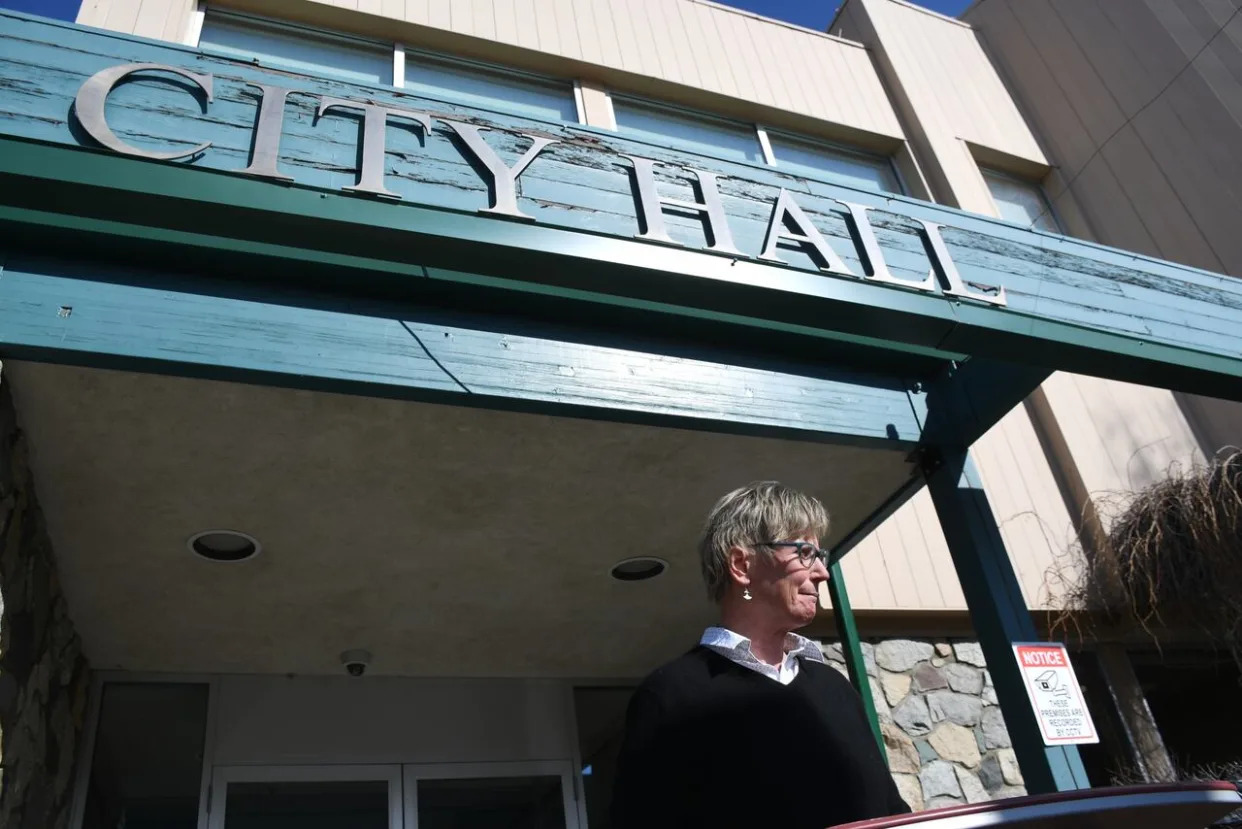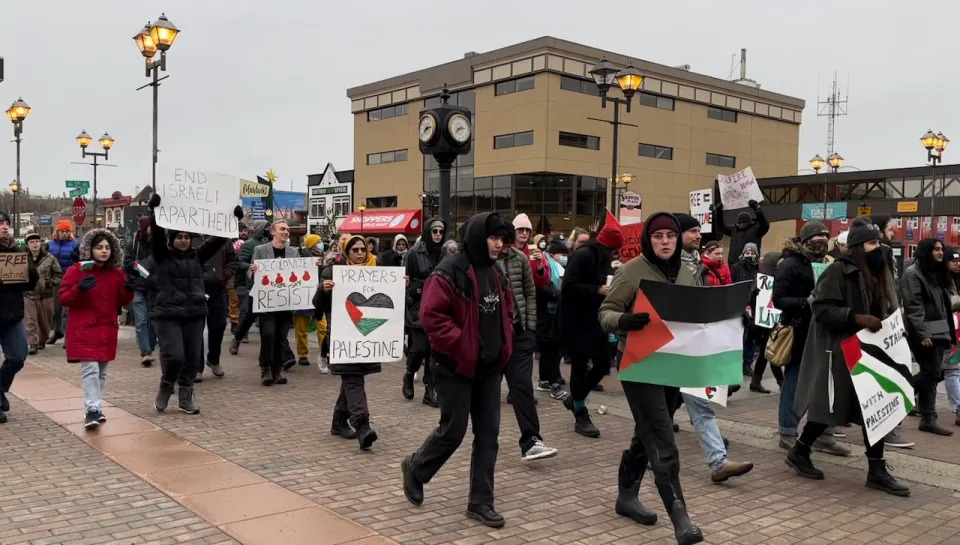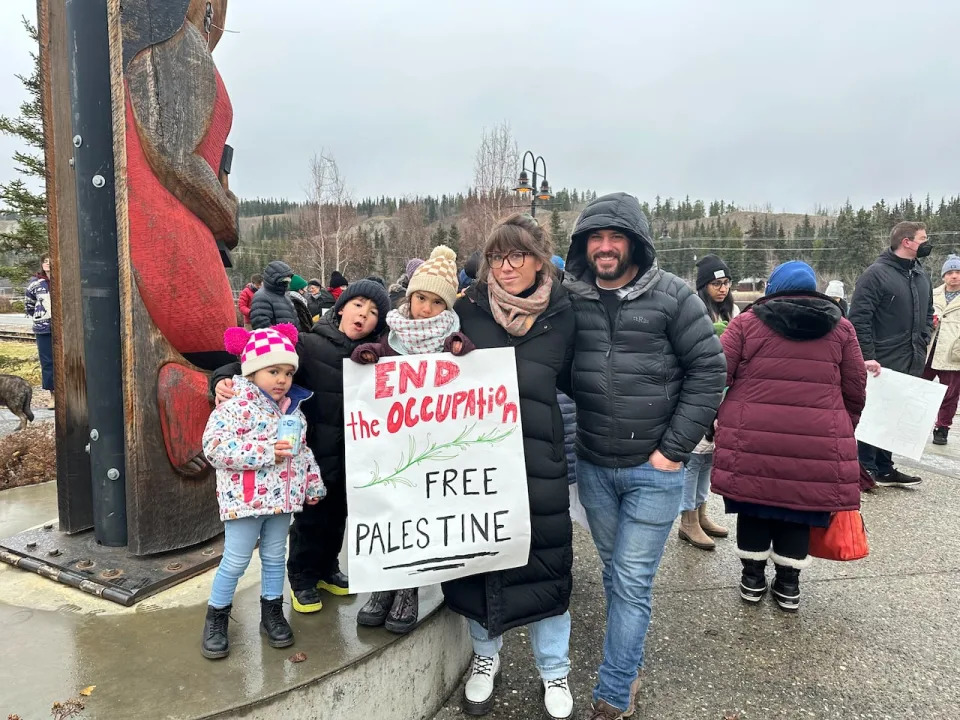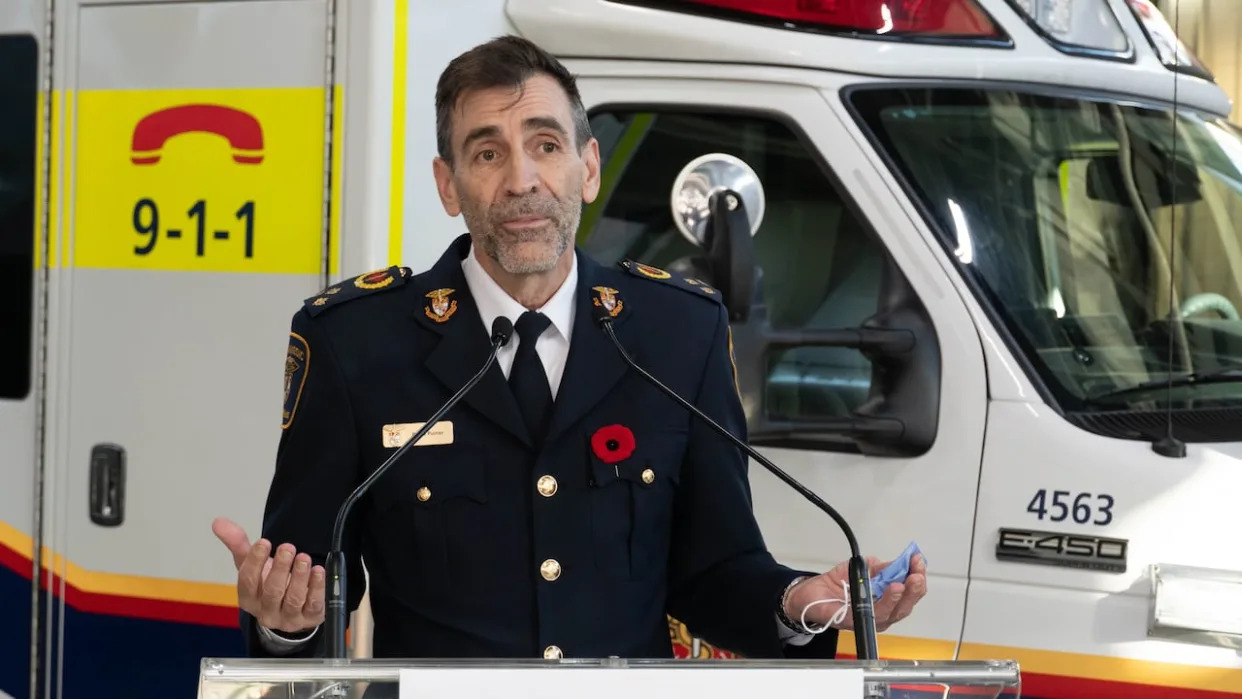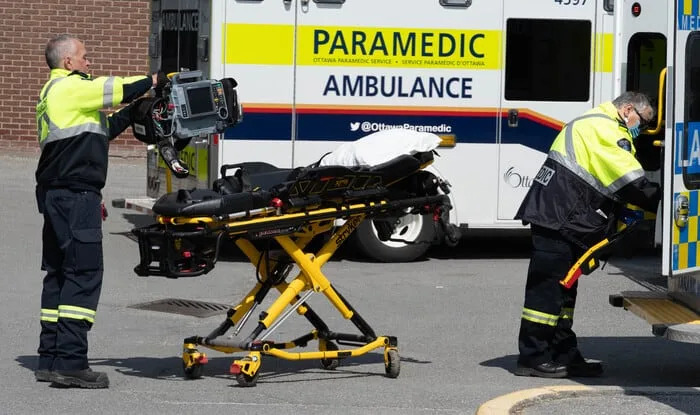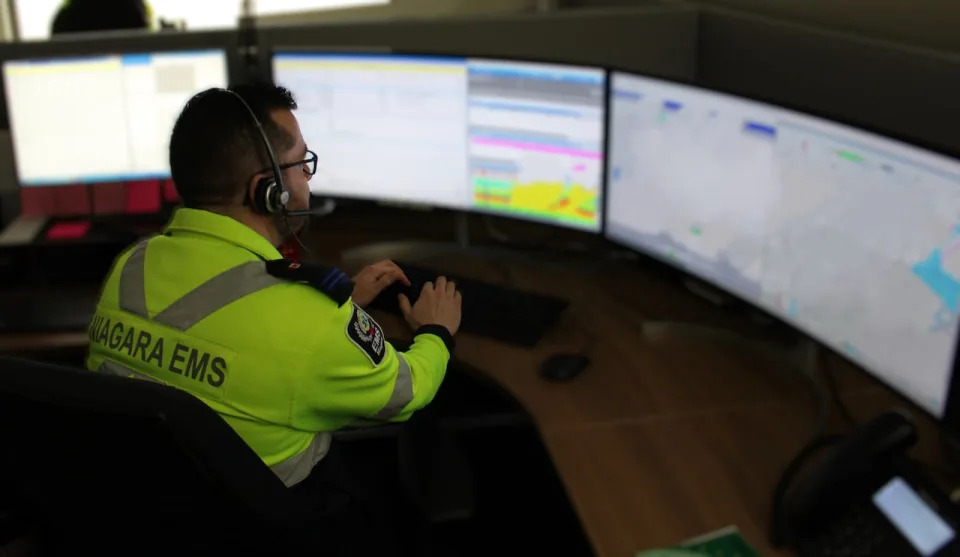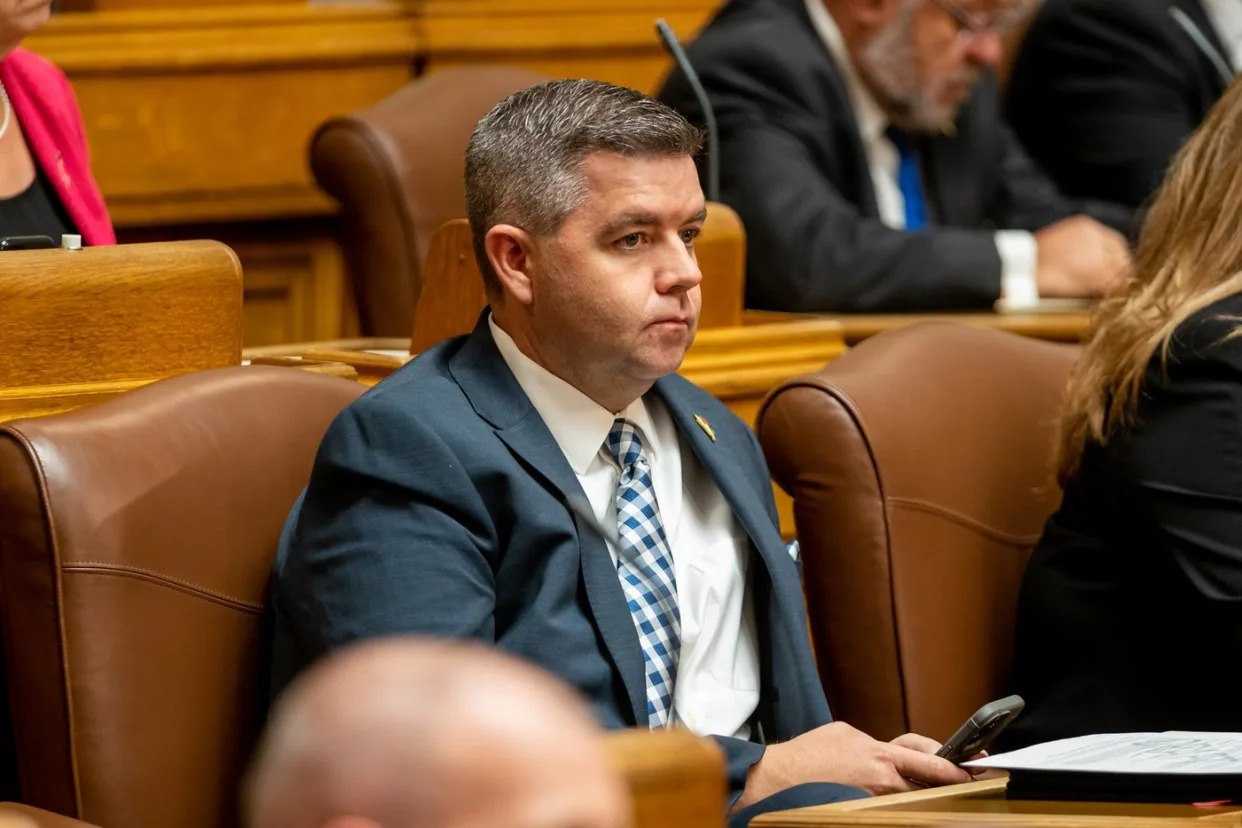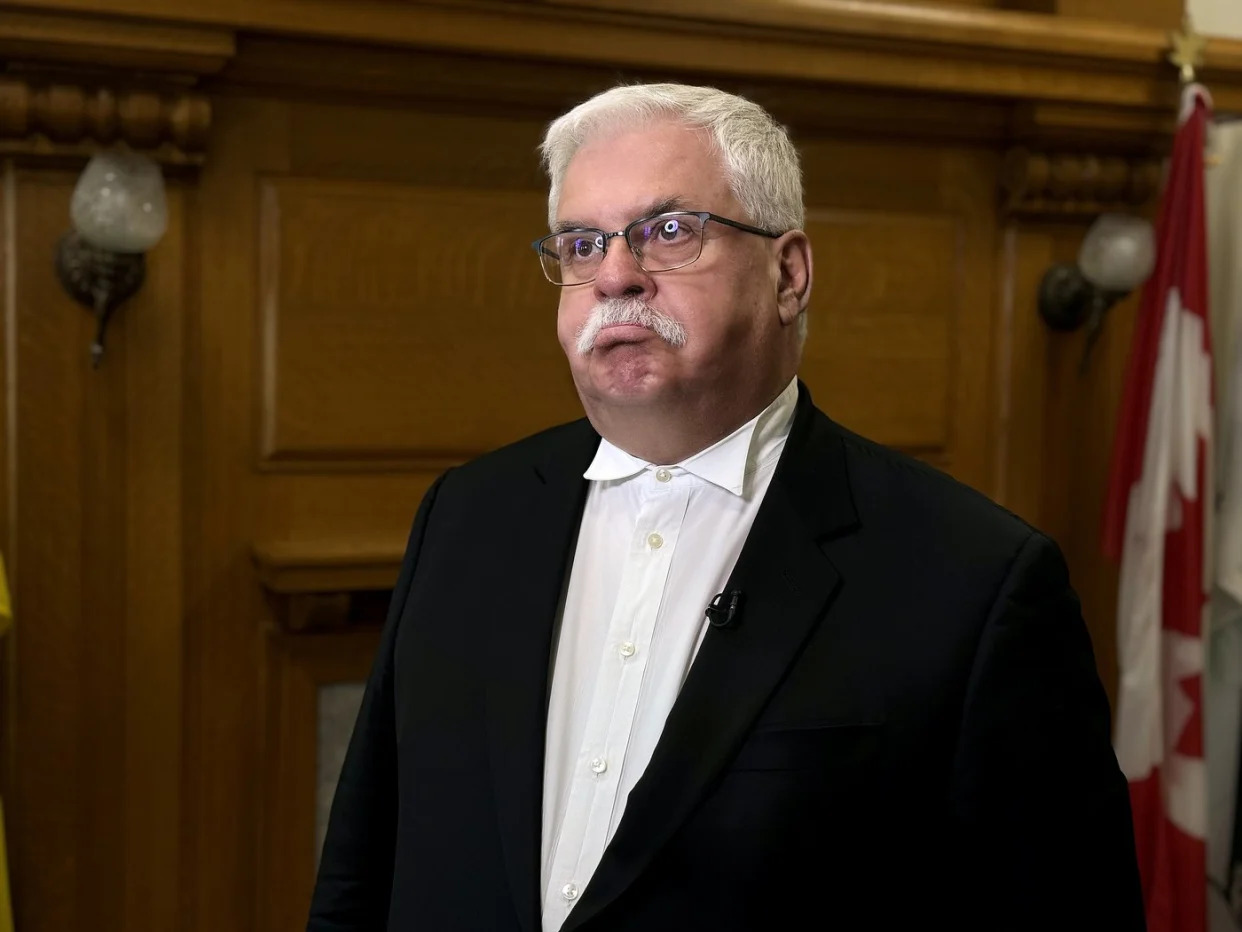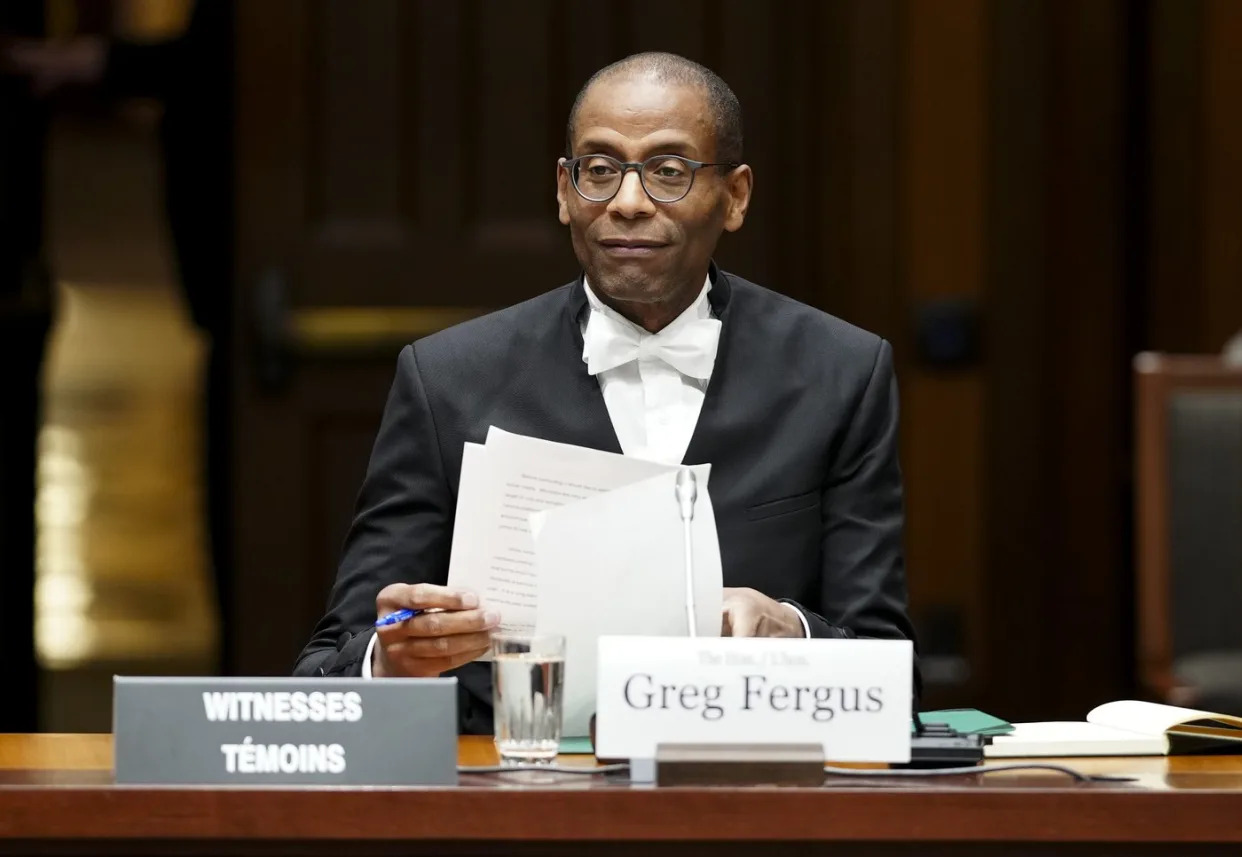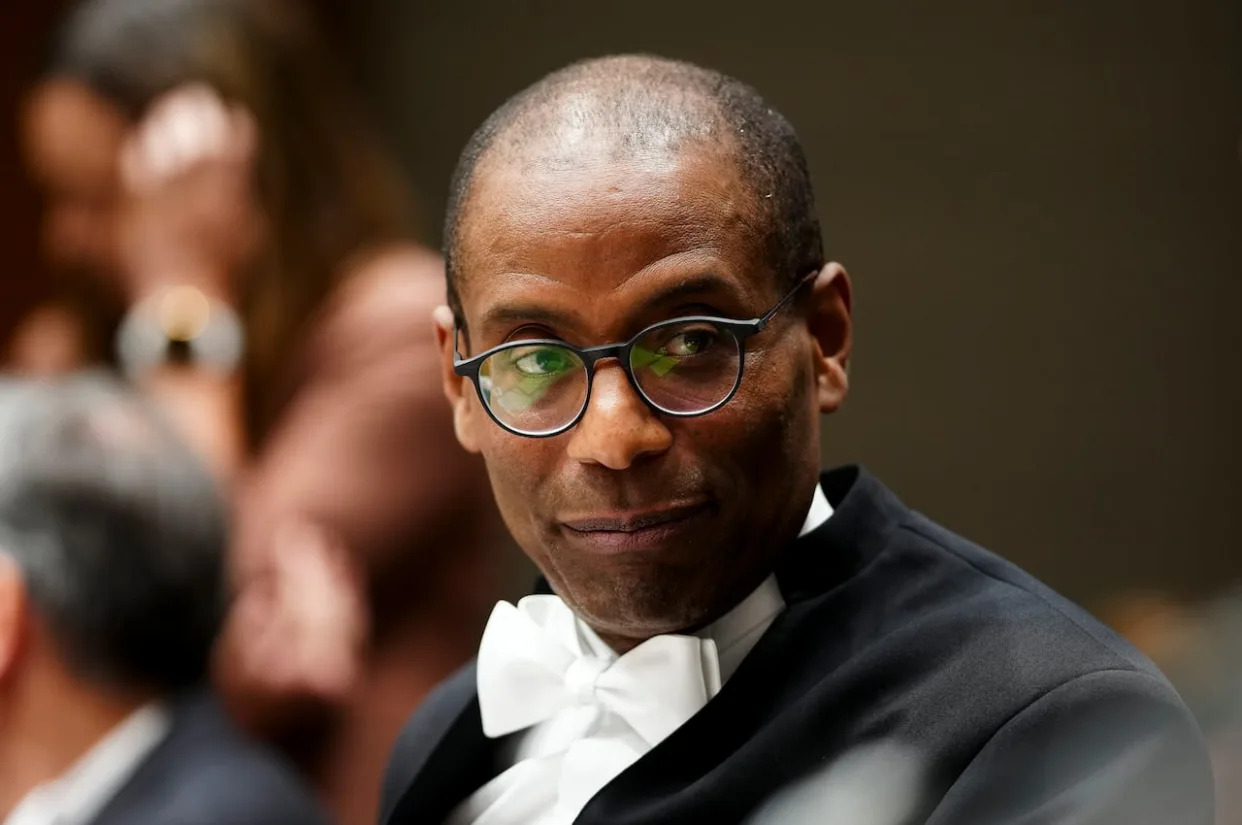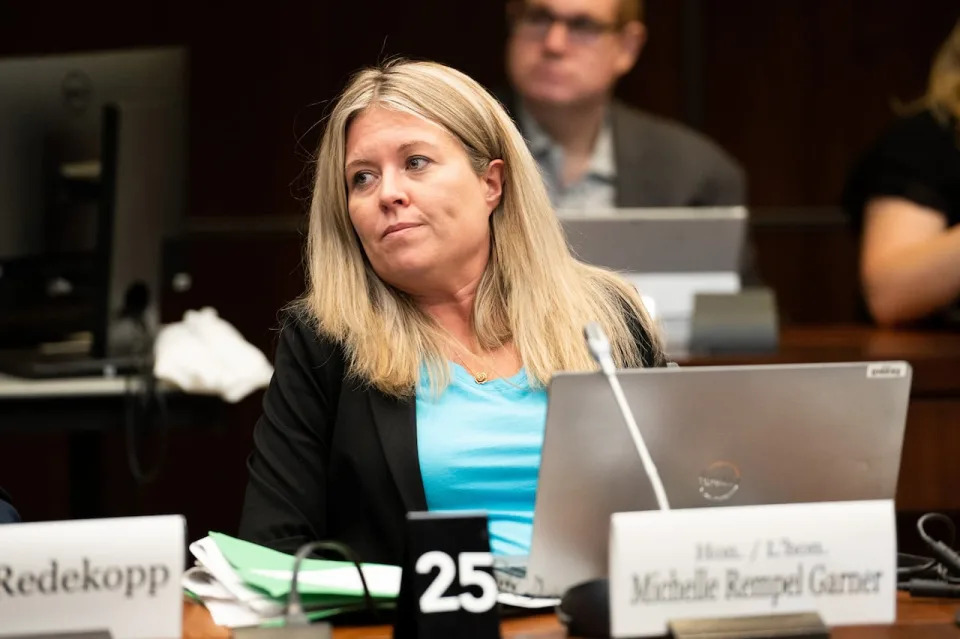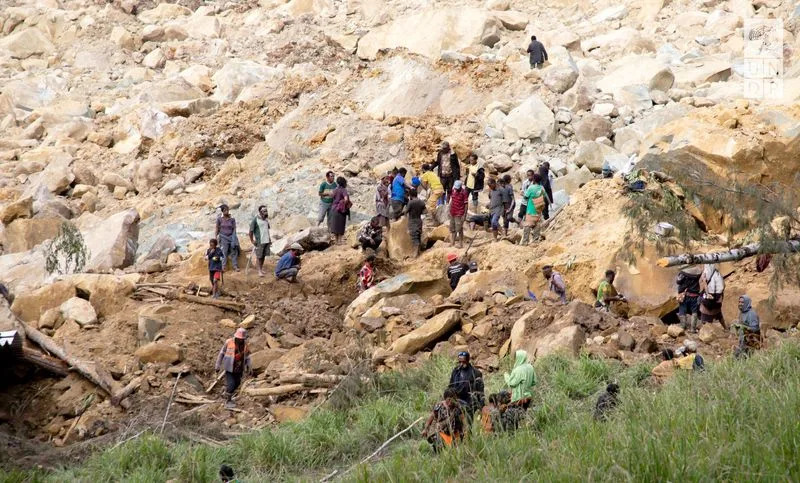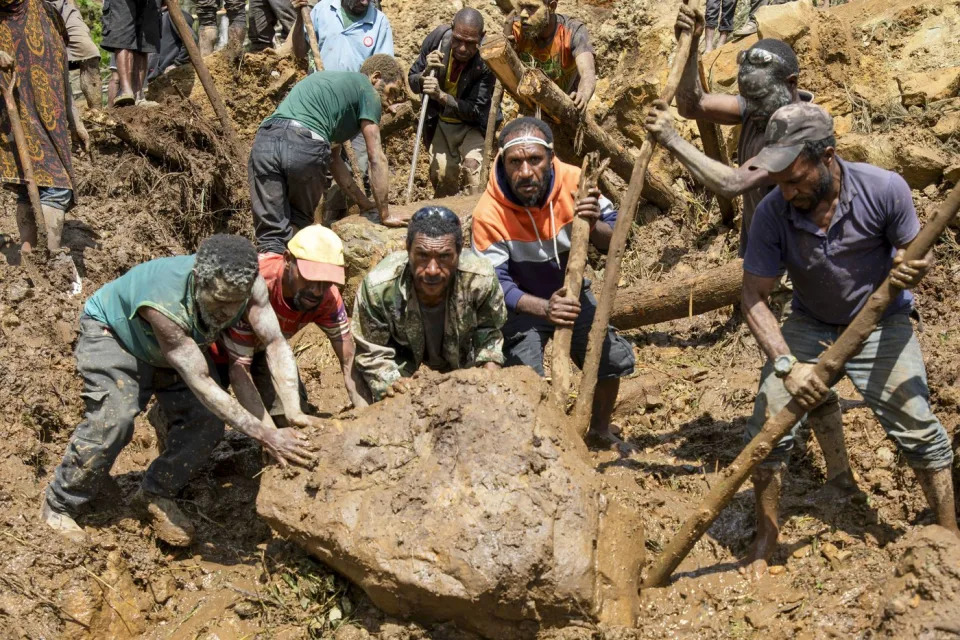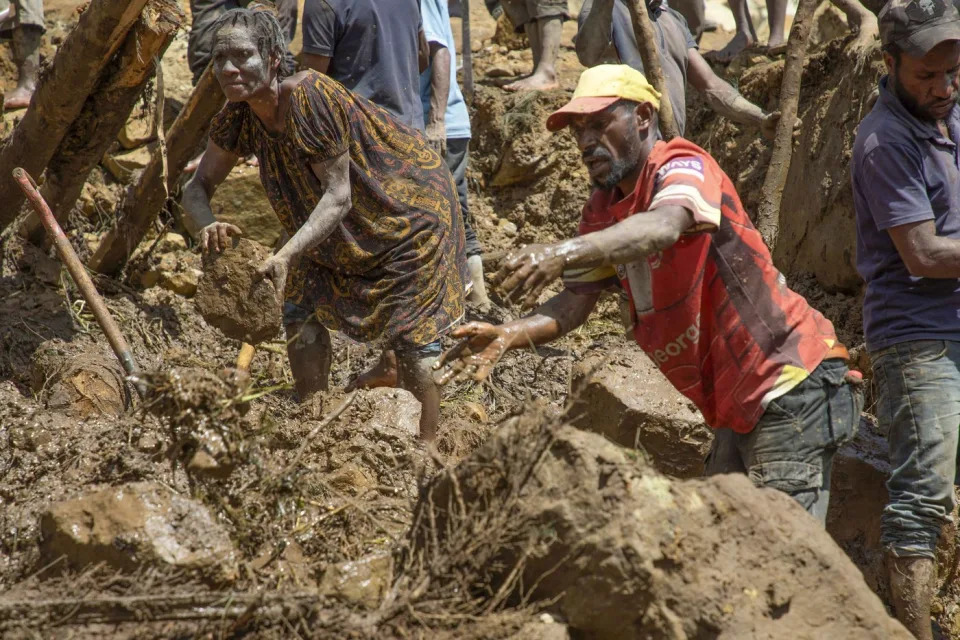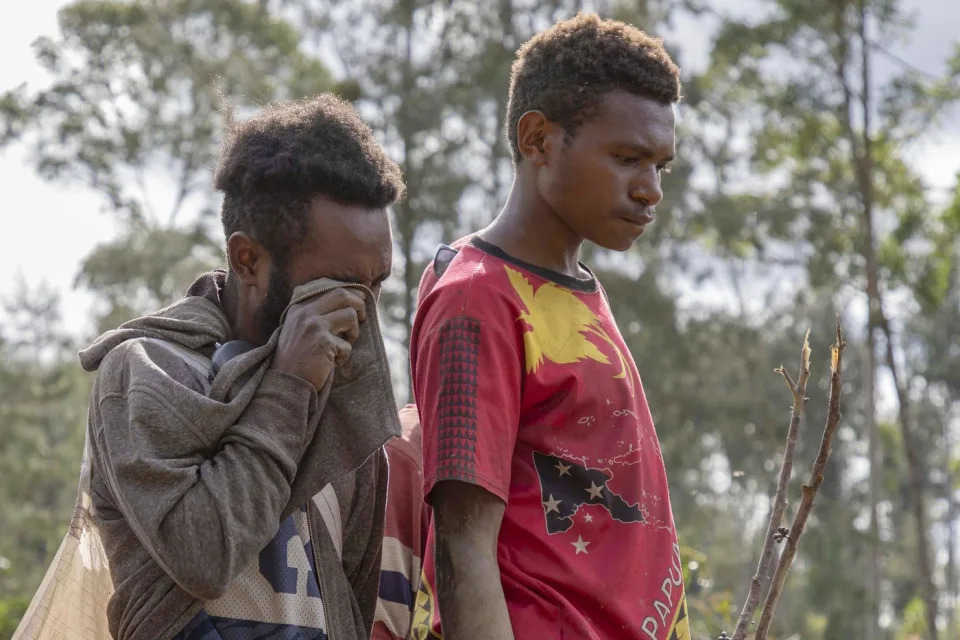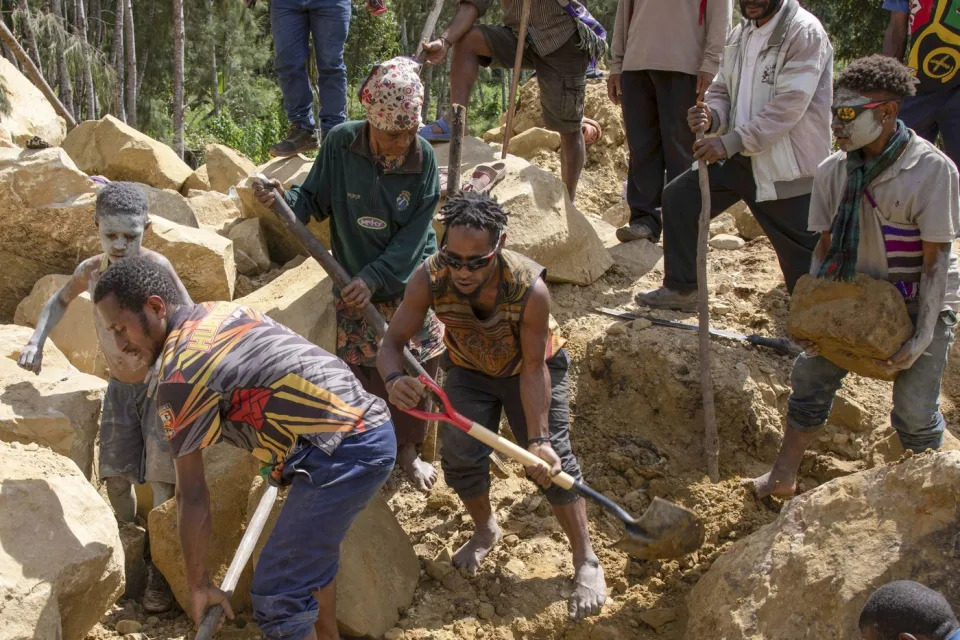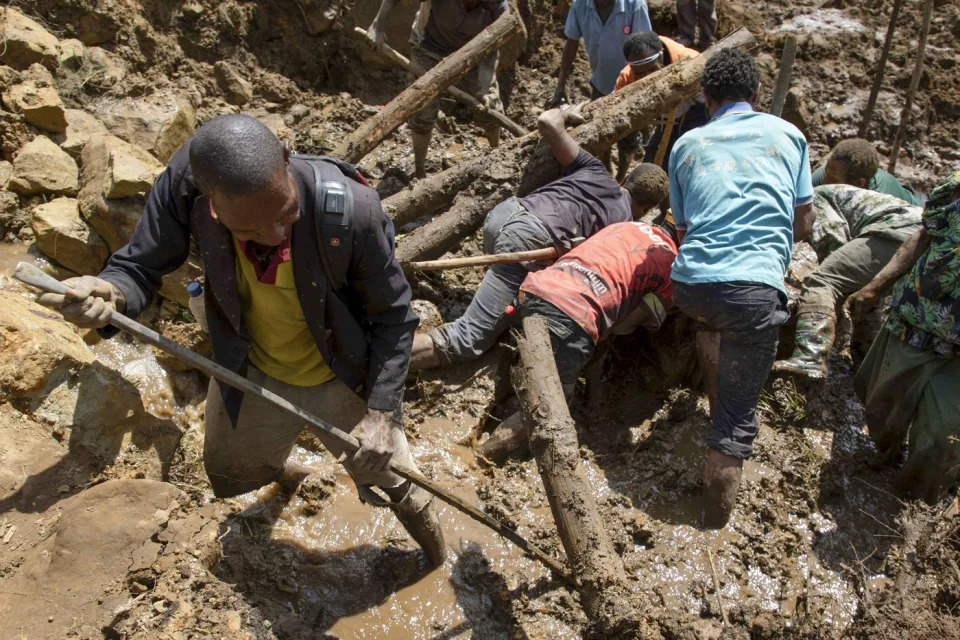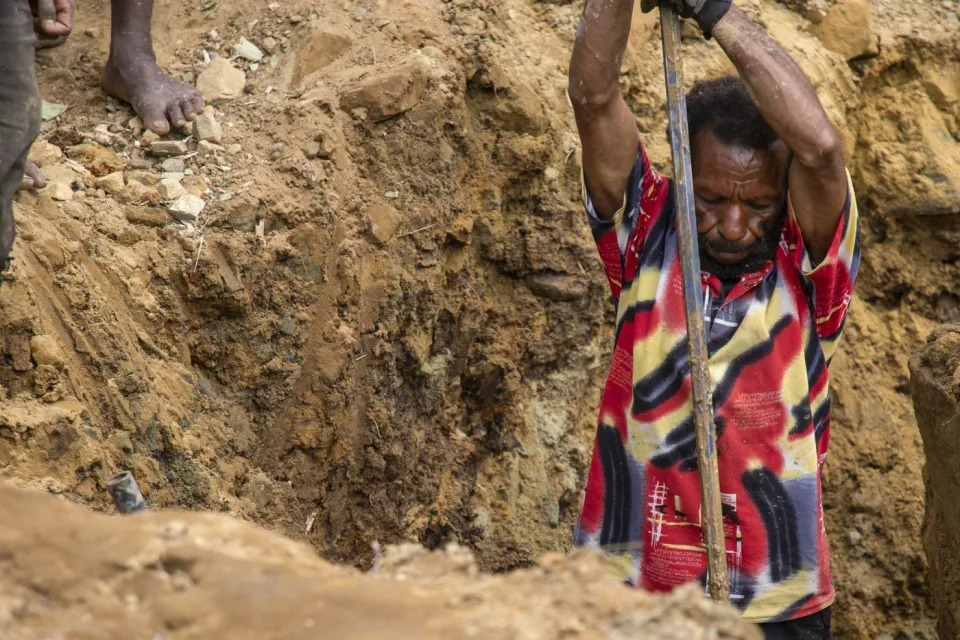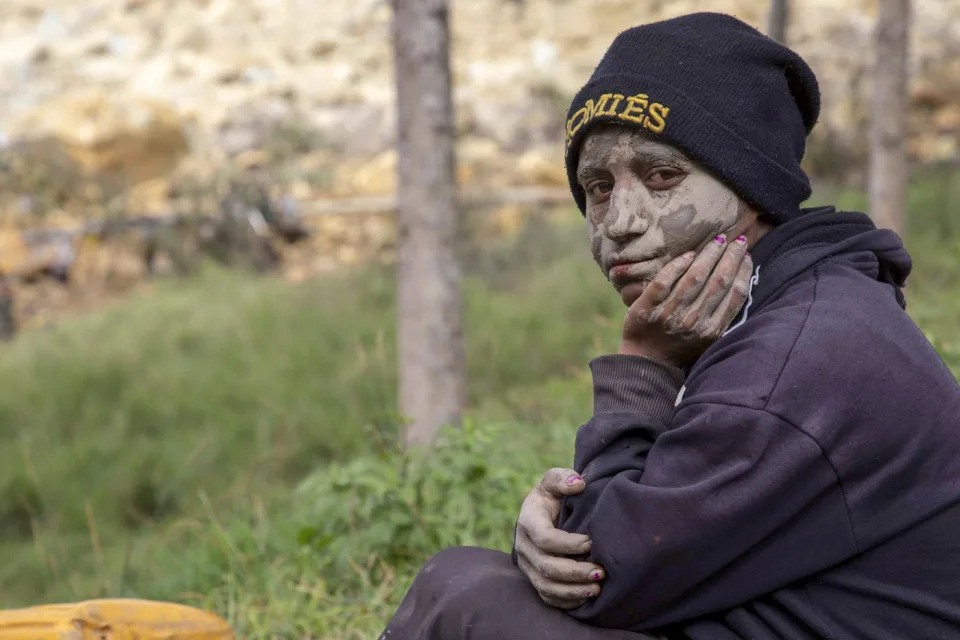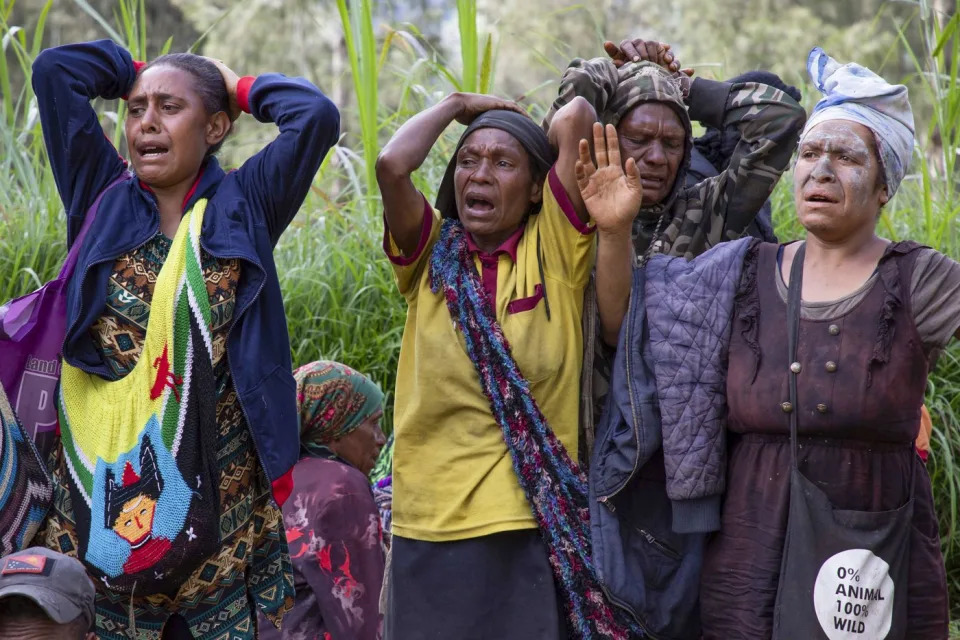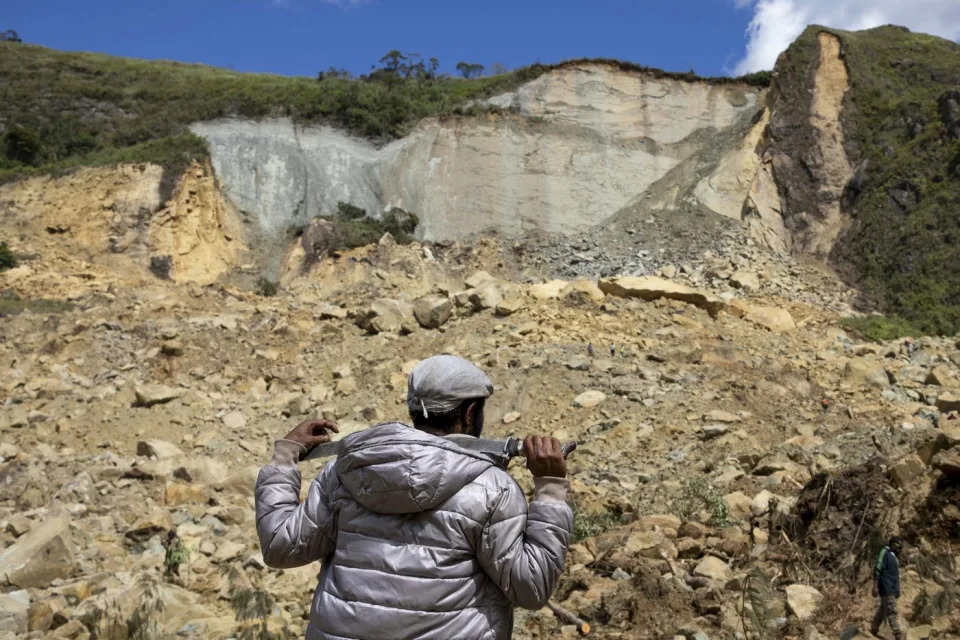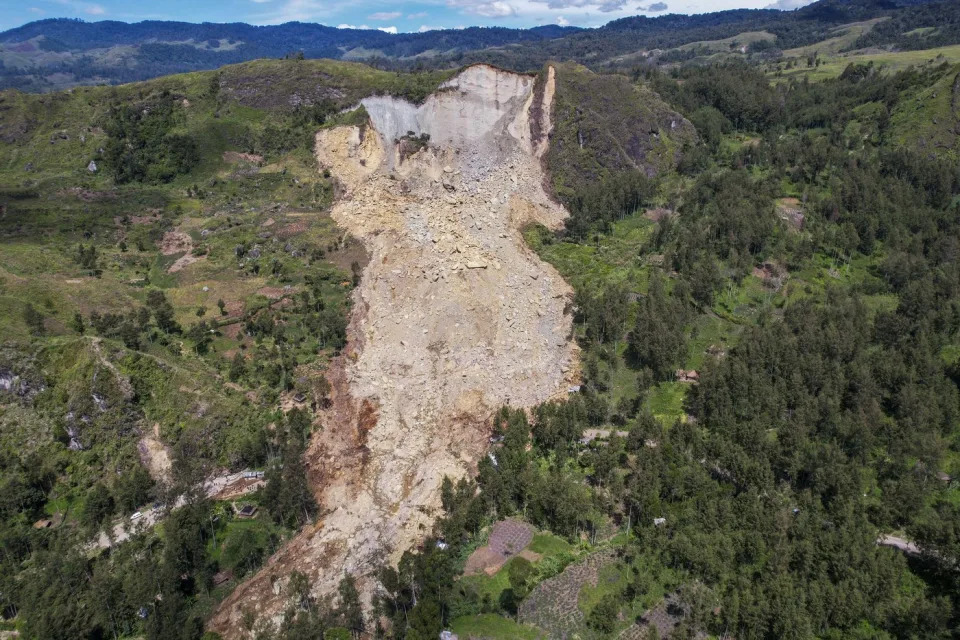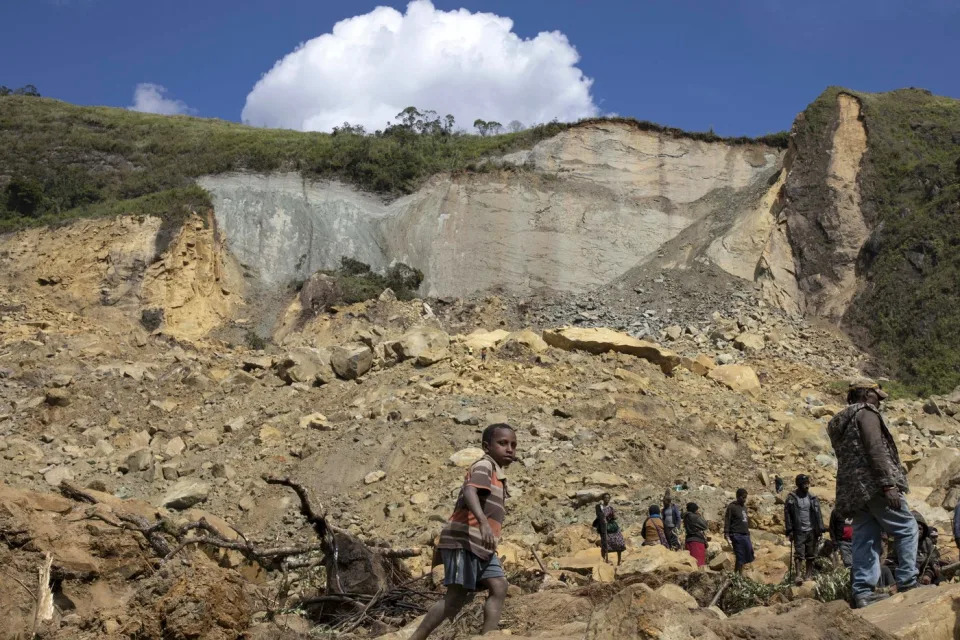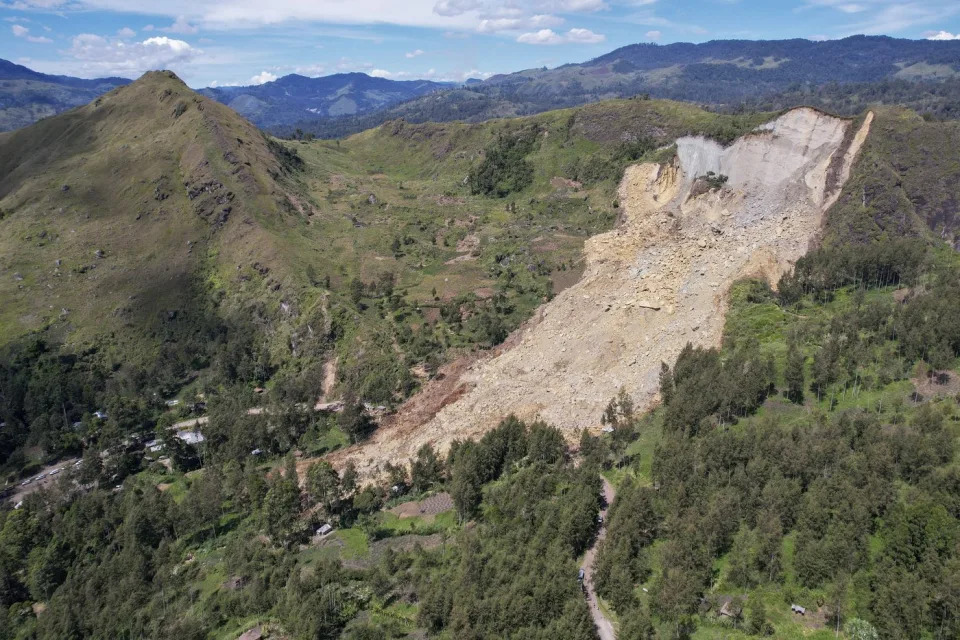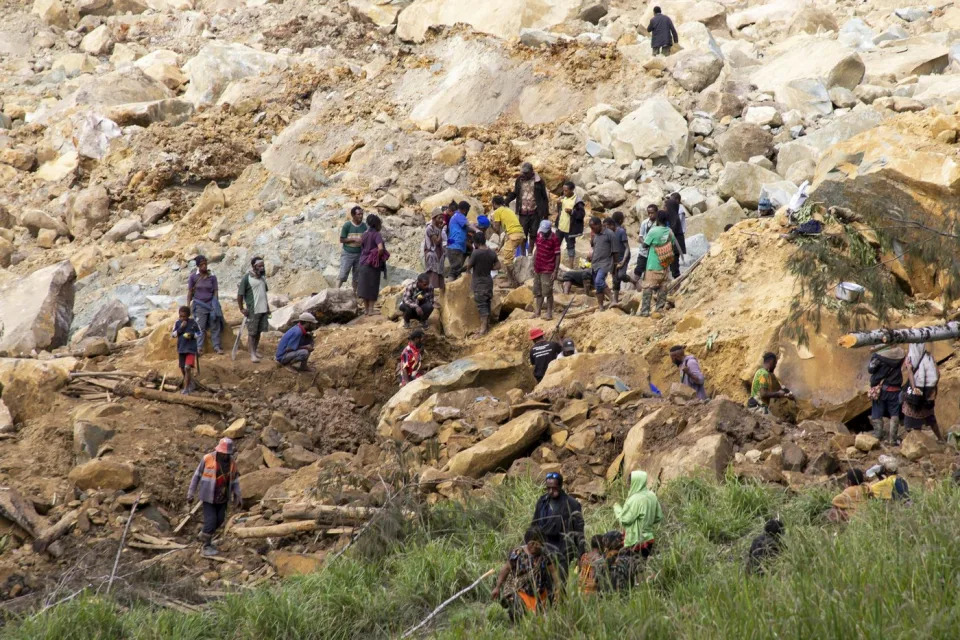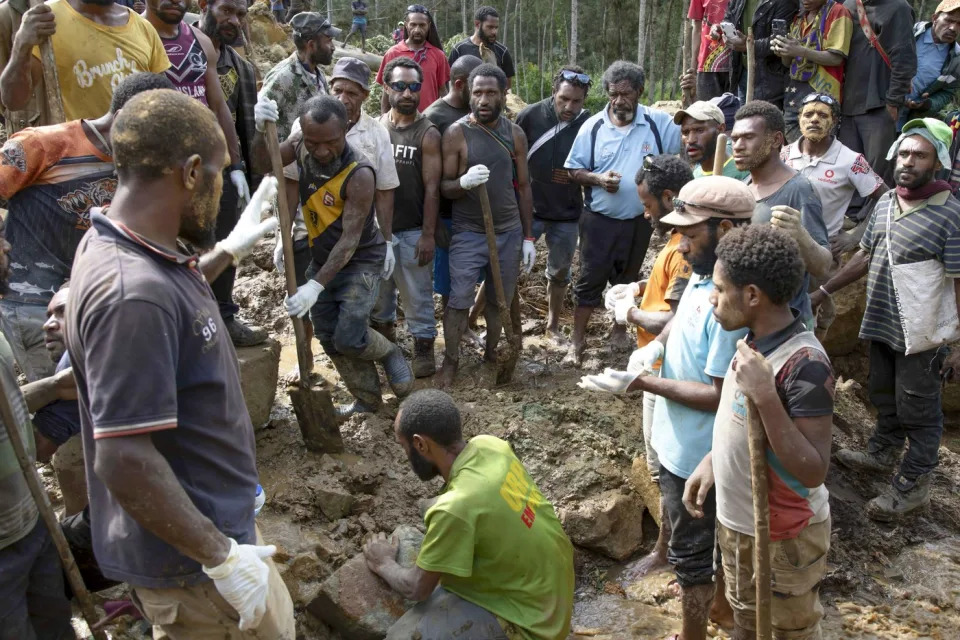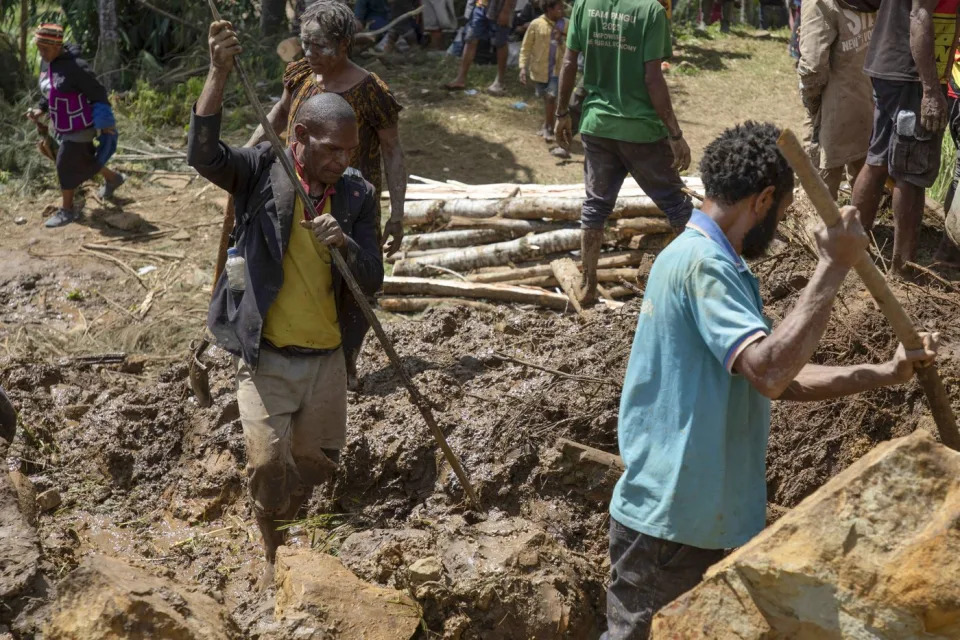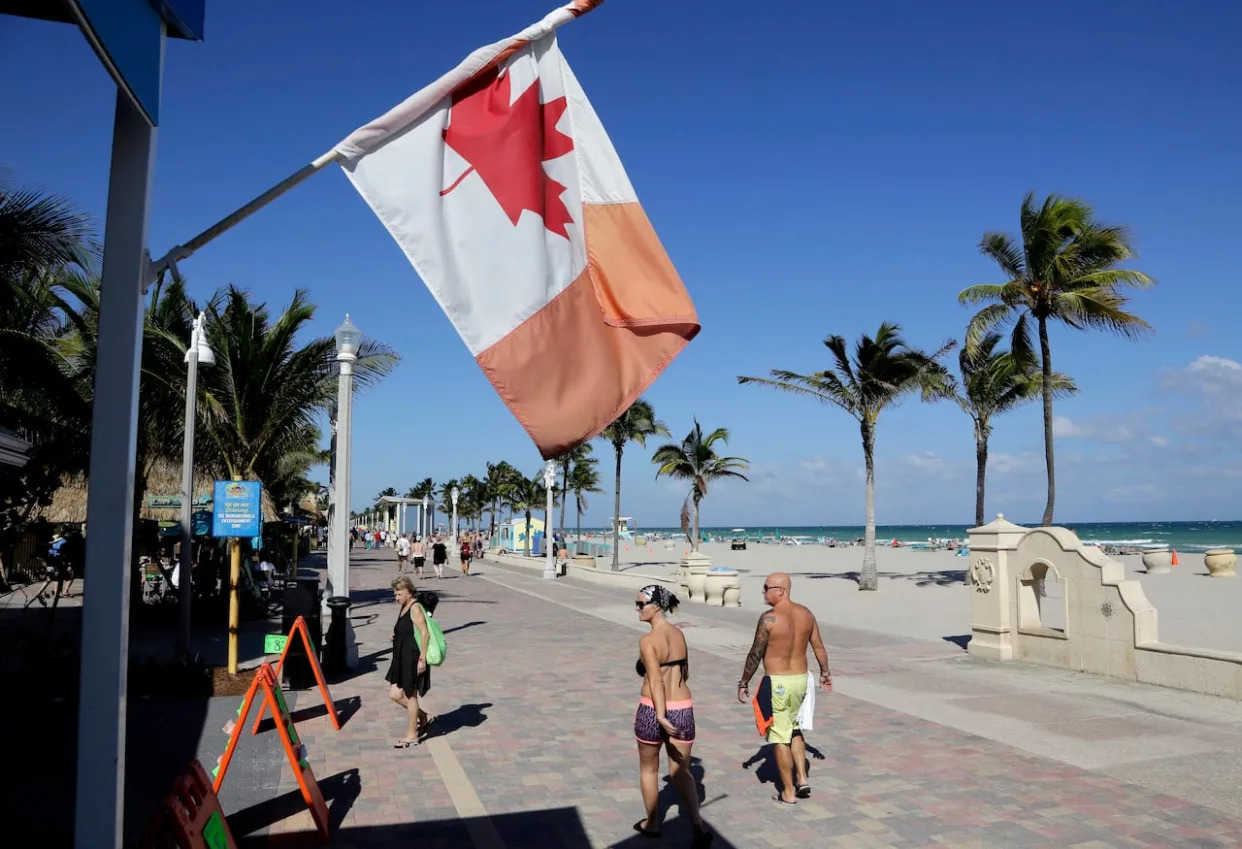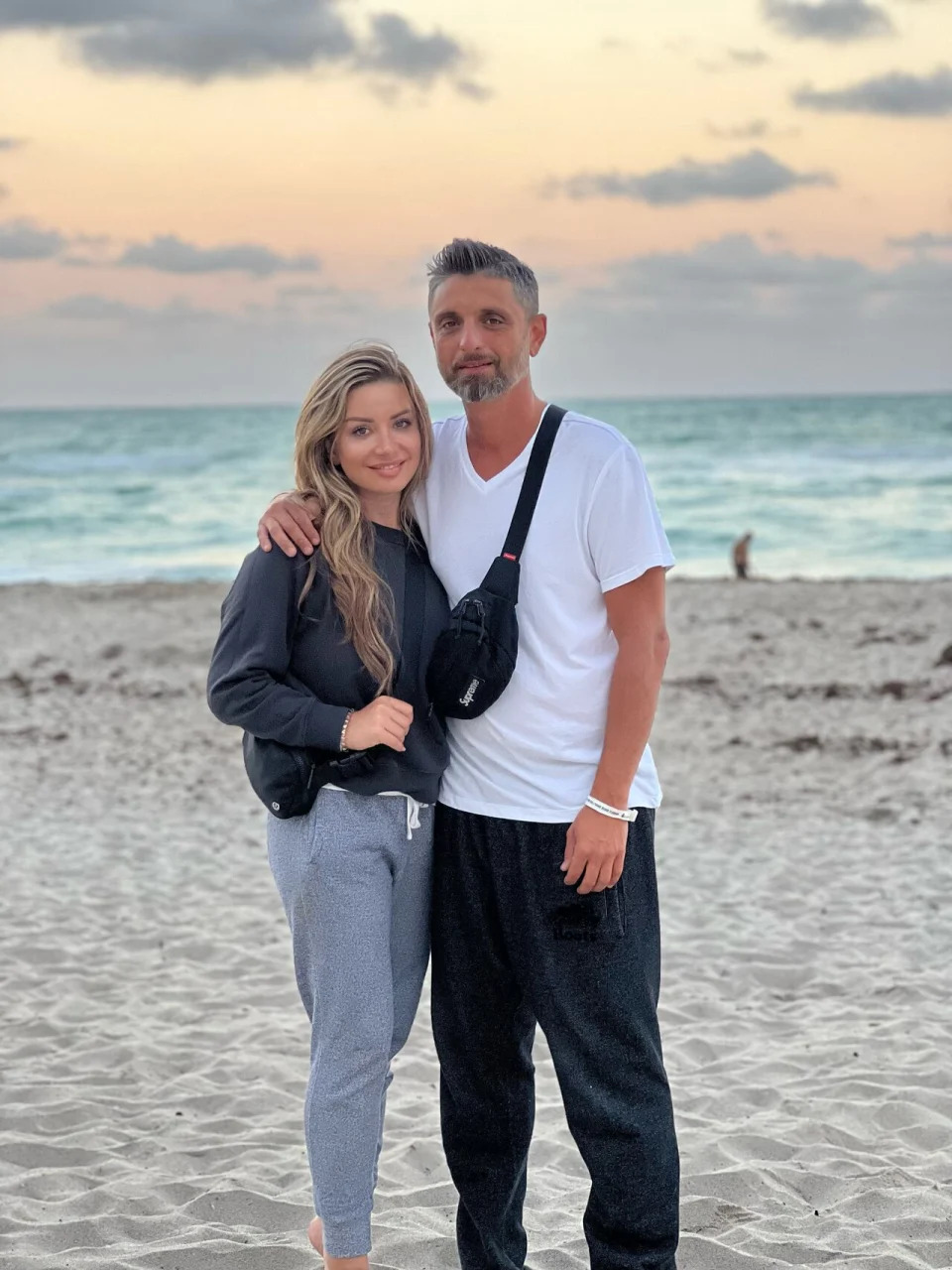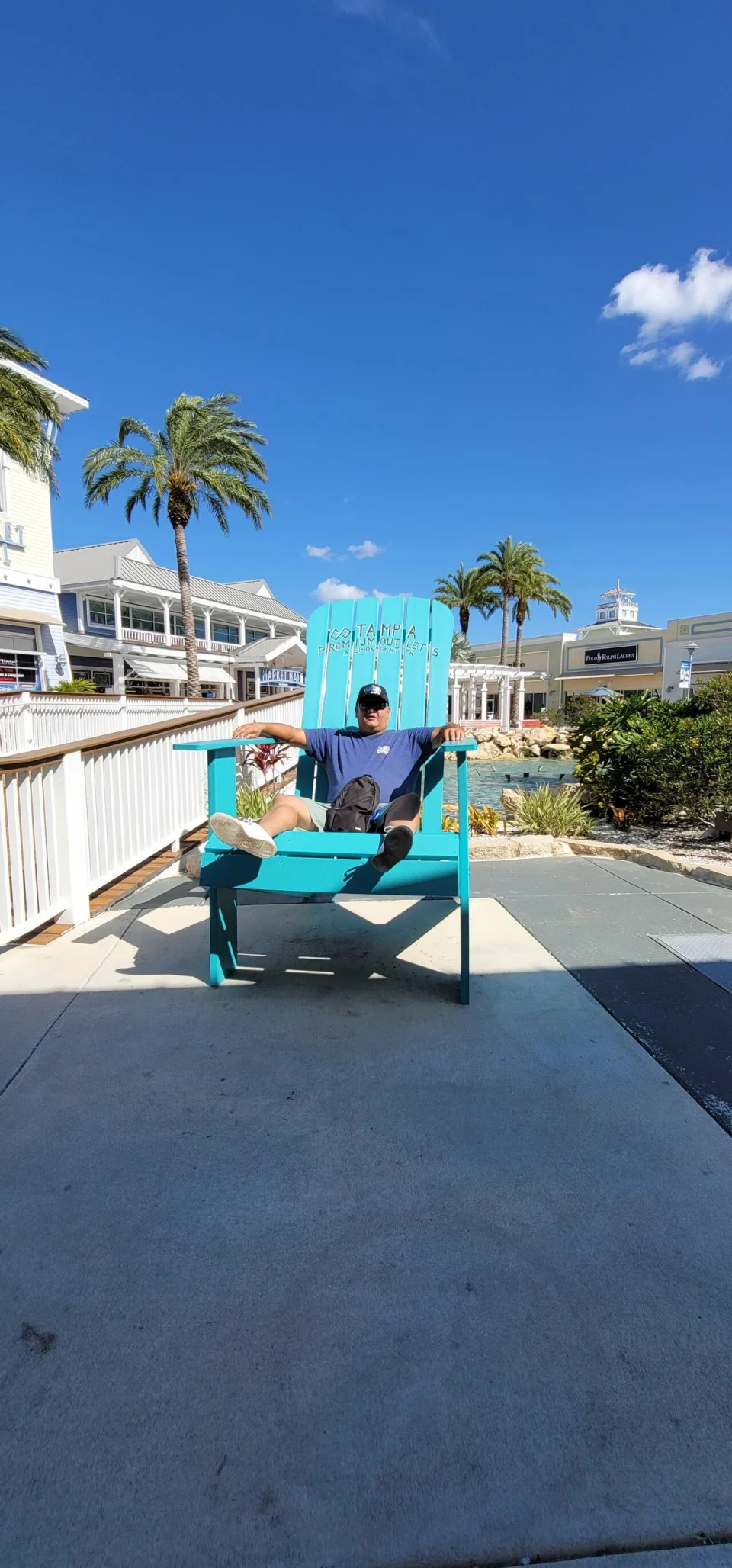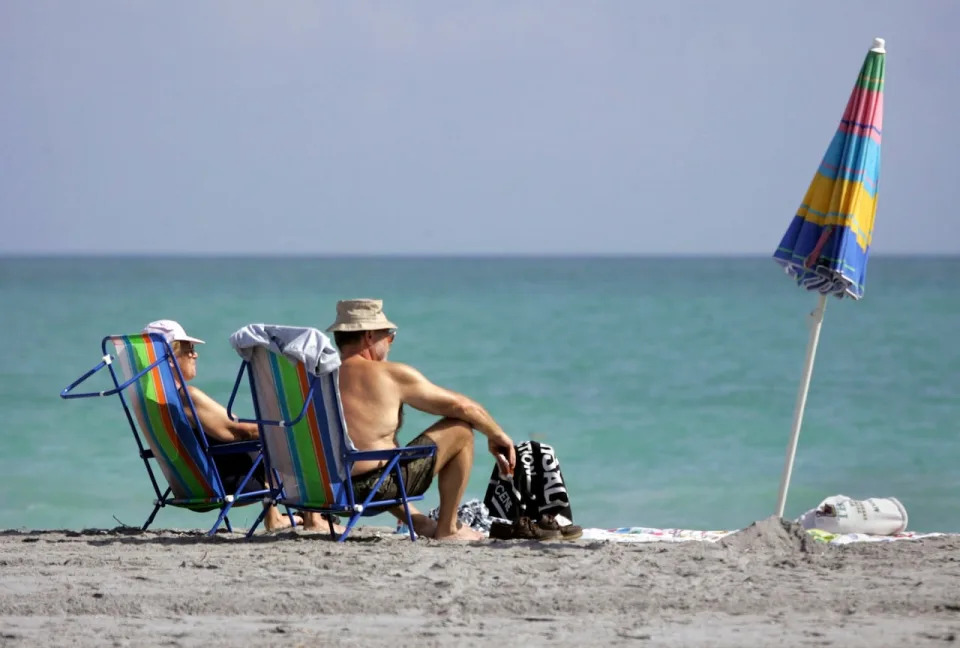BURMA
Myanmar's ethnic armies consolidate strongholds as junta weakens, reports say
Reuters
Wed, May 29, 2024
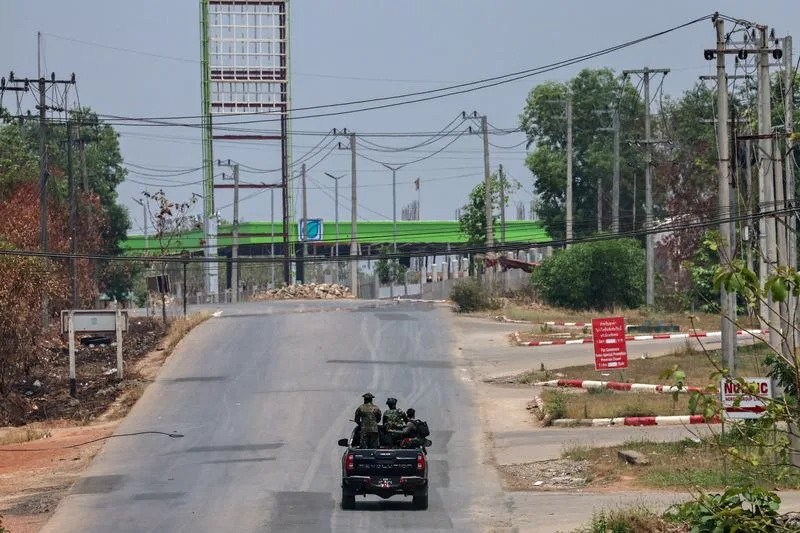
Soldiers from the rebel Karen National Liberation Army patrol in the Myanmar border town of Myawaddy
(Reuters) - Myanmar's ruling junta has lost control over vast tracts of territory, including access to much of its international borders, allowing ethnic armed groups to expand and consolidate regions under their control, two reports assessing the conflict said on Thursday.
The country of 55 million people has been in turmoil since February, 2021 when the military ousted an elected government led by Nobel laureate Aung San Suu Kyi, sparking widespread protests.
The street demonstrations, which were met with a brutal crackdown, morphed into an armed resistance movement that has combined with many of Myanmar's ethnic rebel armies to pose the most significant challenge to the military in decades.
The junta does not have effective control of Myanmar, having lost complete authority over townships covering 86% of the country's territory that are home to 67% of the population, according to the Special Advisory Council for Myanmar (SAC-M).
A junta spokesman did not respond to a call from Reuters seeking comment.
"The military junta does not control enough of the territory of Myanmar to uphold the core duties of the state," the SAC-M, an independent group of international experts set up after the coup to support the return of democracy, said in a briefing paper.
"The junta has abandoned significant territory and has been forced into a defensive posture in most parts of the country where it remains present."
Operation 1027, a coordinated offensive last October led by three ethnic armies, marked a key moment that exposed a weakened military, which ceded swathes of borderlands in Myanmar's north.
A series of offensives by ethnic armies since have pushed the junta out of peripheral areas all the way from the country's border with Thailand to coastal tracts along the Bay of Bengal.
"The ethnic armed groups that have achieved many of these military victories are consolidating control of their expanded homeland areas, with many well on the way to establishing autonomous statelets," the non-profit Crisis Group said in a report.
The military's mounting losses and growing dismay among the elite in the capital Naypyidaw has left junta chief Min Aung Hlaing's future in serious doubt, although he has packed senior ranks with officers loyal to him, according to Crisis Group.
"He might thus be able to keep his job, but given the level of discontent, he could nevertheless face a plot to remove him," it said.
With the junta losing control of almost all the country's borders and non-state administrations likely to expand, neighbouring states, regional blocs and the international community should widen their engagement with resistance groups, both reports said.
Internal displacement in Myanmar has reached a record high, with over three million people forced out of their homes because of the escalating conflict, according to UN agencies.
"The international community must understand this reality and work directly with resistance authorities and civil society to deliver urgent aid and assistance to the Myanmar people," said Yanghee Lee, one of SAC-M's founding members.
(Reporting by Reuters staff, Writing by Devjyot Ghoshal; Editing by Raju Gopalakrishnan)

Why the West needs to pay attention to Myanmar's anti-junta forcesMizy CliftonWed, May 29, 2024 Insights from The Washington Post, Bloomberg, and The New HumanitarianThe NewsAnti-junta forces in Myanmar have gained scores of towns and army bases from the ruling military in recent months, reigniting hopes of a turning point in a three-year-long civil war that has seen more than 3 million people internally displaced and at least 8,000 civilians killed.The junta, which seized power from a democratically-elected government in 2021, is struggling to replenish ground troop losses amid widespread defections, casualties, and surrenders, making it “nearly impossible” to retake lost territory, according to the United States Institute of Peace.SIGNALSSemafor Signals: Global insights on today's biggest stories.Potential Western support for rebels will be ‘politically fraught’Sources: The Washington Post , Lowy Institute , BloombergThe US “should be doing a lot more to bring a decent end to the war,” The Washington Post’s Keith B. Richburg argued. President Joe Biden must bring armed rebel groups and the exiled National Unity Government together “around a common agenda of federalism and democracy” against a brutal junta, he added. Building a genuine federal democracy will “likely take years of highly complex and politically fraught negotiations,” wrote a Myanmar expert for the Lowy Institute, but some resistance groups have already begun instituting state-like structures in areas under their control. Risk-averse governments and donors may be wary of working with armed organizations rather than states but can identify groups that value inclusive, civilian-led structures and international humanitarian law, a Bloomberg columnist wrote.Eyes on Rohingya caught in the crossfireSources: United Nations , Human Rights Watch , The New Humanitarian , Observer Research FoundationThe international community risks “failing a desperate people in their hour of peril” if it does not take action to prevent another Rohingya bloodbath like in 2017, the UN’s Special Rapporteur on human rights in Myanmar said. More than 1,000 men from the mostly Muslim minority have been abducted and forcibly conscripted from across Rakhine State since February 2024, according to Human Rights Watch, but there are also allegations of extortion and targeted killings at the hands of the anti-junta Arakan Army, The New Humanitarian reported. Concrete international actions to address the persecution of the Rohingya “remain elusive” and the lack of accountability mechanisms perpetuates the cycle of violence, Sreeparna Banerjee from the Observer Research Foundation warned.
Insights from The Washington Post, Bloomberg, and The New HumanitarianThe NewsAnti-junta forces in Myanmar have gained scores of towns and army bases from the ruling military in recent months, reigniting hopes of a turning point in a three-year-long civil war that has seen more than 3 million people internally displaced and at least 8,000 civilians killed.The junta, which seized power from a democratically-elected government in 2021, is struggling to replenish ground troop losses amid widespread defections, casualties, and surrenders, making it “nearly impossible” to retake lost territory, according to the United States Institute of Peace.SIGNALSSemafor Signals: Global insights on today's biggest stories.Potential Western support for rebels will be ‘politically fraught’Sources: The Washington Post , Lowy Institute , BloombergThe US “should be doing a lot more to bring a decent end to the war,” The Washington Post’s Keith B. Richburg argued. President Joe Biden must bring armed rebel groups and the exiled National Unity Government together “around a common agenda of federalism and democracy” against a brutal junta, he added. Building a genuine federal democracy will “likely take years of highly complex and politically fraught negotiations,” wrote a Myanmar expert for the Lowy Institute, but some resistance groups have already begun instituting state-like structures in areas under their control. Risk-averse governments and donors may be wary of working with armed organizations rather than states but can identify groups that value inclusive, civilian-led structures and international humanitarian law, a Bloomberg columnist wrote.Eyes on Rohingya caught in the crossfireSources: United Nations , Human Rights Watch , The New Humanitarian , Observer Research FoundationThe international community risks “failing a desperate people in their hour of peril” if it does not take action to prevent another Rohingya bloodbath like in 2017, the UN’s Special Rapporteur on human rights in Myanmar said. More than 1,000 men from the mostly Muslim minority have been abducted and forcibly conscripted from across Rakhine State since February 2024, according to Human Rights Watch, but there are also allegations of extortion and targeted killings at the hands of the anti-junta Arakan Army, The New Humanitarian reported. Concrete international actions to address the persecution of the Rohingya “remain elusive” and the lack of accountability mechanisms perpetuates the cycle of violence, Sreeparna Banerjee from the Observer Research Foundation warned.
Rohingya forced to fight alongside Myanmar army tormentors
Tanbirul Miraj RIPON with Shafiqul ALAM in Dhaka
Tue, May 28, 2024

Families of those dragooned into combat say their relatives had no choice (-)
Rohingya mother Sofura Begum has spent years in a squalid refugee camp after fleeing Myanmar. Now her teenage son has been taken to fight alongside the troops that put her there.
Militant Rohingya groups in Bangladesh have forcibly recruited hundreds of young Rohingya men and boys to battle the Arakan Army, a rebel outfit in neighbouring Myanmar that has won a string of victories against the junta there.
Those sent to fight are making common cause with the military that drove 750,000 members of the persecuted Muslim minority from their homes and into Bangladesh in a 2017 crackdown now the subject of an ongoing UN genocide court case.
In their recruitment drive, militants say Rohingya need to ally with old enemies in the Myanmar army to face a new threat.
But the families of those dragooned into combat say that their relatives were not given a choice.
"They told us to hand him over," Begum, 30, told AFP after her 15-year-old son Abdul was picked up by armed men from her home.
"They threatened us... They said it's our war of faith. I didn't want my son to join the war. But we are in a dangerous situation."
AFP spoke with six families who said men from their household had been forcibly recruited by three Rohingya armed groups with an established presence in the refugee camps.
One man, speaking to AFP on condition of anonymity for fear of retribution, said his 20-year-old son had been taken by the Arakan Rohingya Salvation Army (ARSA) and sent across the border to fight.
"I learned that he was injured in the war," the man said.
"It's shameful my son was forcibly recruited... Every day our people are being picked up."
- 'Slaughtered our people' -
Myanmar's military has lost vast swathes of territory this year to an advance by the Arakan Army, one of several rebel groups battling the junta that took power in a 2021 coup.
The Arakan Army says it is fighting for more autonomy for the ethnic Rakhine population in the state, which is also home to around 600,000 Rohingya who remained after the 2017 crackdown.
This month the rebel outfit took control of Buthidaung, a Rohingya-majority town not far from Bangladesh.
Several Rohingya diaspora groups said in a statement that fighters forced Rohingya to flee, then looted and burned their homes -- claims the Arakan Army called "propaganda".
Another armed group in the Bangladesh camps, the Rohingya Solidarity Organisation (RSO), said it had recruited refugees to fight.
"The Arakan Army has tortured and slaughtered our people," Ko Ko Linn, the RSO's political chief, told AFP.
"Their only policy is the extermination of the Rohingya community," he added. "So we are recruiting Rohingyas regularly, giving them military training."
Ko Ko Linn would not say if other groups had forcibly recruited people.
But Arakan Army spokesperson Khaing Thu Kha accused three groups -- RSO, ARSA and the Arakan Rohingya Army (ARA) -- of recruiting Rohingya from Bangladesh.
He said the conscripts were taken for training in a Myanmar army base, before "fighting alongside" the junta's forces.
With mobile and internet networks down across swathes of Rakhine state it is difficult to assess how any cooperation between Rohingya groups and the junta is playing out on the battlefield.
- 'Lied from the beginning' -
A senior UN staffer and a rights group official, both speaking on condition of anonymity due to the sensitivity of the subject, said Rohingya armed groups had recruited "hundreds" of refugees in Bangladesh.
Rohingya armed groups working in concert with the military have recruited hundreds more men and boys in Myanmar itself.
Myanmar officially regards the Rohingya as interlopers from Bangladesh, despite roots in the country stretching back centuries.
Successive governments there have subjected the minority to decades of persecution, including a 2015 decision to cease recognising their citizenship.
Thomas Kean of the International Crisis Group think tank told AFP that children as young as 14 had been pressed into battle against their will.
But he added that it appeared a small number of Rohingya had signed on to fight voluntarily after being promised "wages and even citizenship" by Myanmar's junta.
After significant battlefield losses against rebel groups since last year, Myanmar's junta activated a dormant conscription law in February to bolster its armed forces.
One Rohingya man in Buthidaung, who asked not to be identified, told AFP his brother had been "beaten and abducted by ARSA" and taken to serve alongside the military.
He said that the junta's representatives had said at first that the recruits were being trained as a militia to defend Rohingya villages.
"But later, they began using them on the battlefields," he added. "The junta lied from the beginning."
‘The entire town is burning.’ Fires rage as Rohingya caught up on the front lines of Myanmar’s civil war
Helen Regan and Avery Schmitz, CNN
May 23, 2024·8 min read
Families of Rohingya people trapped in Myanmar’s west are desperately trying to contact loved ones after a weekend of widespread arson attacks displaced up to 200,000 people and caused extensive destruction of homes.
The country’s Rohingya have long suffered mass atrocities and forced displacement that many – including UN experts – consider to be genocide, perpetrated by the country’s military. Now, they are caught between warring forces in a deepening conflict that has unleashed more violence against the Muslim-majority community.
Since seizing power in a coup in February 2021, the military has been fighting a widening civil war against ethnic armed groups and people’s resistance forces across Myanmar.
In the western state of Rakhine, the Arakan Army, a powerful ethnic-minority armed group battling Myanmar’s military junta, said it seized a predominantly Rohingya town close to the Bangladesh border.
Reports from activists and relatives of residents have emerged of AA soldiers torching and looting Rohingya houses in the town of Buthidaung, preventing people from returning home, confiscating phones and threatening to kill those who try to contact family abroad.
A junta-imposed internet and telecoms blackout in the state is making it almost impossible for relatives to speak with family members there and for journalists, activists and international monitoring groups to verify exactly what is unfolding.
Farooq, a Rohingya poet living as a refugee in neighboring Bangladesh, told CNN that most of his family were still in Buthidaung but he has not been able to reach them since Saturday.
“Then, my brother-in-law told me that my family were displaced, and my home was burned down by the Arakan Army,” he said.
Rohingya rights activists and former officials said about 200,000 people had been forced to flee their homes to escape the fires and that many people, including women and children, had spent multiple nights hiding out in open paddy fields with no food, medicine, or belongings. There are also reports of an unconfirmed number of casualties.
CNN cannot independently verify these reports. But satellite imagery showed huge fires engulfed downtown Buthidaung on Saturday morning and continued to burn over the weekend.
Remote sensing data curated by NASA’s Fire Information for Resource Management System and viewed by CNN suggests that the fires spread in the early hours, while satellite imagery collected by space technology company Maxar and obtained by CNN shows large-scale destruction across Buthidaung on that day.
“The entire town is burning,” said Nay San Lwin, a Rohingya activist originally from Buthidaung, and co-founder of the Free Rohingya Coalition. “Few houses remain intact, only a few.”
The violence echoes attacks on the stateless Rohingya community in 2016 and 2017, when Myanmar’s military launched a brutal campaign of killing, rape and arson that is currently subject to a genocide investigation at the International Court of Justice.
An estimated 1 million Rohingya people live now in what many consider to be the world’s largest refugee camp in Bangladesh, after hundreds of thousands fled the military’s “clearance operations.”
Many of those who remained in Myanmar live in apartheid-like conditions and face heavy restrictions on their movement, education and healthcare. More than 100,000 Rohingya people have been kept in squalid displacement camps by the military and government in the Rakhine state capital for the past 10 years. Others have made perilous boat journeys to Indonesia, choosing to risk their lives at sea over enduring inhumane conditions at home.
Young Rohingya men also face forcible conscription from the junta, the AA and armed Rohingya insurgent groups both in Myanmar and in the sprawling Bangladesh camps where gang violence is escalating.
Experts with the Special Advisory Council for Myanmar on Sunday warned that the Rohingya are “again at risk of genocide” and urged the UN Human Rights Council to convene a special session to address the “worsening human rights emergency in Myanmar.” UN rights chief Volker Türk said in a statement on Sunday that “this is a critical period when the risk of yet further atrocity crimes is particularly acute.”
Buthidaung attacks
Fighting between the Arakan Army and Myanmar’s military erupted in November after a shaky ceasefire broke down. The AA has made significant territorial gains in Rakhine state in recent months and last week announced that it had taken control of all junta military bases around Buthidaung, as well as the town itself.
Aung Kyaw Moe, a Rohingya adviser to Myanmar’s shadow National Unity Government – a continuation of the administration deposed in the coup – wrote on Saturday that the AA had ordered residents to leave the town in the days before the attack.
“Two days before AA call elders for meeting to leave the houses as soon as possible AA will confiscate the Buthidaung downtown,” he wrote on X, adding “the Rohingya said they will not leave because they have no where to go.”
In recent weeks, the population of Buthidaung had swelled as residents fled fighting in nearby villages, Rohingya activists said.
Nay San Lwin from the Free Rohingya Coalition – who managed to speak with several residents of Buthidaung – said that, at 9:30 p.m. local time on May 17, AA soldiers entered the town and shortly after began torching homes. Reports also suggested that junta airstrikes and artillery had hit Buthidaung that day but there were no military soldiers left in the town, he said.
“I asked them about who are conducting the burning – they strictly said the AA members came into town and started shooting into the air and warning people to get out of their houses or you will be burned alive,” he said.
John Quinley, director of human rights group Fortify Rights, said there is “clear destruction of civilian infrastructure including Rohingya civilian homes.”
“What we have in Buthidaung over the last few days is the junta conducting artillery shelling and airstrikes… and signs pointing to the AA conducting widespread arson over the weekend,” he said.

This satellite image shows a damaged bridge in Buthidaung, Myanmar, on May 18, 2024. - © 2024 Maxar Technologies
AA spokesperson Khaing Thu Kha wrote on Telegram Friday evening that the armed group was “evacuating the Muslim communities in Buthidaung and providing food, shelter, and medical care for them including the children, the women, and elderly persons.”
The AA has denied it torched the town, saying in a statement on May 20 that it “adheres to its principle of fighting under the military code of conduct and never targets non-military objects.”
It accused the Myanmar military, along with allied Rohingya militant groups – which it refers to as “Bengali terrorists” – of destroying Buthidaung.
The AA said that on May 17 the Myanmar military “launched a prolonged aerial attack on Buthidaung township until midnight as their last desperate attacks.”
A previous statement from the AA in late April said that homes of non-Muslim people living in Buthidaung had been burned down in attacks by “junta-backed Bengali Muslim terrorist groups” and “other Muslim militants recently armed and trained by the junta.”
CNN cannot independently verify these claims.
Farooq, whose family were forced to flee the fires, said it was the AA who set fire to villages and the homes of the Rohingya. There was no active fighting with the military at the time, he said.
“In Buthidaung, when my (family) home and when my mom was asked to leave the village, there was no fight at all. There is no military left, no base, no junta there,” he said.
He said AA soldiers had warned residents there not to contact people living abroad and anyone caught with a Bangladesh SIM card “will be executed.”
Nay San Lwin also said he had heard reports that AA soldiers were taking cash and mobile phones from fleeing Rohingya.
“They are afraid they have footage (of them) torching these houses,” he said.
In recent weeks, Buthidaung’s residents had been subject to increasing violence by junta forces, rights groups and activists have said. Satellite imagery from Planet Labs, obtained by CNN, shows that western neighborhoods were affected by fire damage in mid-April and the Pan Zinn Chaung Bridge—a crucial artery on the eastern edge of the city—was destroyed prior to Friday’s arson attacks.
Humanitarian offices of Medecins Sans Frontières in the town were burned down on April 15, the group said. “We hear reports of more than 200 homes being burned down and witness thousands of people who are displaced by the violence seeking refuge in an area directly across from where our office was located,” it said at the time.
Warnings of further atrocities
An immediate concern is a humanitarian crisis in Rakhine state, with newly displaced residents unable to access food or clean water.
“There are no NGOs at all, who will distribute food for them? The Myanmar military has blocked all access,” said Nay San Lwin. “Also they are confining people to these villages. They are not allowed to leave.”
The violence has sparked a flurry of condemnations from human rights groups and the international community, calling for a halt in the fighting, to protect civilians, and for humanitarian aid to be allowed into Rakhine.
State Department spokesperson Matthew Miller said the US is “deeply troubled by the reports of increased violence” in Rakhine state and warned there are “risks of further atrocities occurring.”
“The military’s previous acts of genocide and other crimes against humanity targeting Rohingya, in addition to its history of stoking intercommunal tensions in Rakhine State and elsewhere across the country, underscore the grave dangers to civilians.”
Myanmar’s National Unity Government said on Tuesday that it has “repeatedly acknowledged that shameful past actions and failures in Myanmar allowed horrendous atrocities to be committed against minority communities, including the Rohingya, Rakhine and others in Rakhine state.”
“We are committed to ensuring that these crimes are never repeated.”
CNN’s Lucas Lilieholm and Angus Watson contributed reporting.
